As technology continues to advance, our entertainment options have expanded beyond traditional cable TV. The rise of streaming services has revolutionized the way we consume media, leading to increased competition and a decline in traditional cable TV viewership. In this article, we will explore the impact of streaming services on the television industry. We will examine the growth of streaming services, the decline of cable TV, and the changing landscape of the entertainment industry.
Key Takeaways:
- The popularity of streaming services has disrupted the traditional cable TV industry.
- Cord-cutting, or the act of canceling cable TV subscriptions in favor of streaming services, has contributed to the decline of cable TV viewership.
- Streaming services offer on-demand viewing and original content, changing the landscape of media consumption.
The Growth of Streaming Services
Streaming services have experienced explosive growth in recent years, as more consumers turn to on-demand viewing options for their entertainment needs. Gone are the days of waiting for your favorite show to air on cable TV at a specific time- now users can simply log into their preferred streaming platform and access a vast library of movies and TV shows at their convenience.
Streaming platforms such as Netflix, Hulu, and Amazon Prime have become household names, and their influence on the television industry cannot be ignored. The rise of these services has challenged traditional cable TV providers to adapt to the changing landscape of media consumption and consumer preferences.
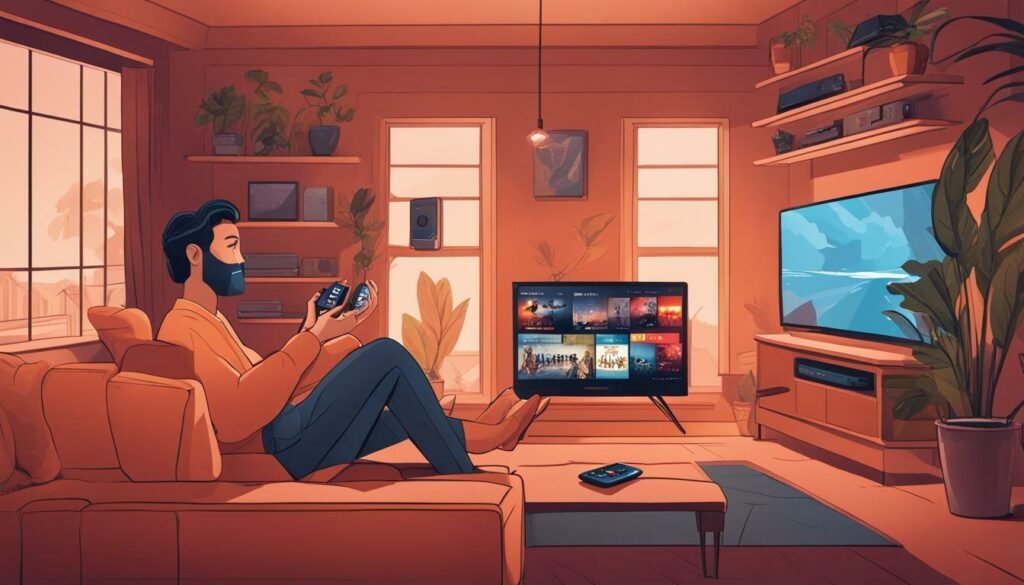
One of the key reasons for the success of streaming services is the convenience of on-demand viewing. Users can watch their favorite shows and movies whenever they want, without having to worry about recording or missing a specific airing time. This flexibility is especially appealing to busy consumers who may not have the time or desire to watch television on a set schedule.
Beyond the convenience factor, streaming services have also gained a following due to their vast selection of content. From classic films to original series, there is something for everyone on these platforms. This variety of options is a stark contrast to traditional cable TV, which often offers limited options and requires users to pay for channels they may not even watch.
The success of streaming services has also paved the way for a new generation of media companies, with many original streaming series garnering critical acclaim and attention from viewers. As a result, traditional TV networks have been forced to adapt to the changing entertainment landscape by creating their own streaming services or producing original content to compete.
Streaming Platforms
| Streaming Service | Price | Number of Subscribers |
|---|---|---|
| Netflix | $8.99 – $17.99 per month | 208 million |
| Hulu | $5.99 – $11.99 per month | 41.6 million |
| Amazon Prime Video | $8.99 per month (included with Amazon Prime subscription) | 200 million |
In conclusion, the growth of streaming services has had a significant impact on the television industry, challenging traditional cable TV providers and changing the way consumers consume media. With the convenience of on-demand viewing and a vast selection of content, it’s no wonder that streaming platforms have become a dominant force in the entertainment industry.
The Decline of Traditional Cable TV
In recent years, the television industry has experienced a significant shift with the rise of streaming services. Traditional cable TV, once the dominant medium of entertainment, has seen a decline in subscribership due in part to the phenomenon known as cord-cutting. Cord-cutting refers to the practice of canceling cable TV subscriptions in favor of streaming services, which offer a more flexible and cost-effective alternative to traditional cable TV.
The impact of cord-cutting on the television industry has been immense, as cable TV providers struggle to adapt to the changing preferences of consumers. This decline in subscribership has also been driven by the increasing availability of alternative entertainment options, such as streaming services, video games, and social media.
According to a recent report by eMarketer, the number of U.S. households subscribing to cable TV is expected to decline by 7.5% in 2021, while the number of households subscribing to streaming services is projected to increase by 12.5%. This trend is expected to continue in the coming years as more consumers shift towards streaming services.
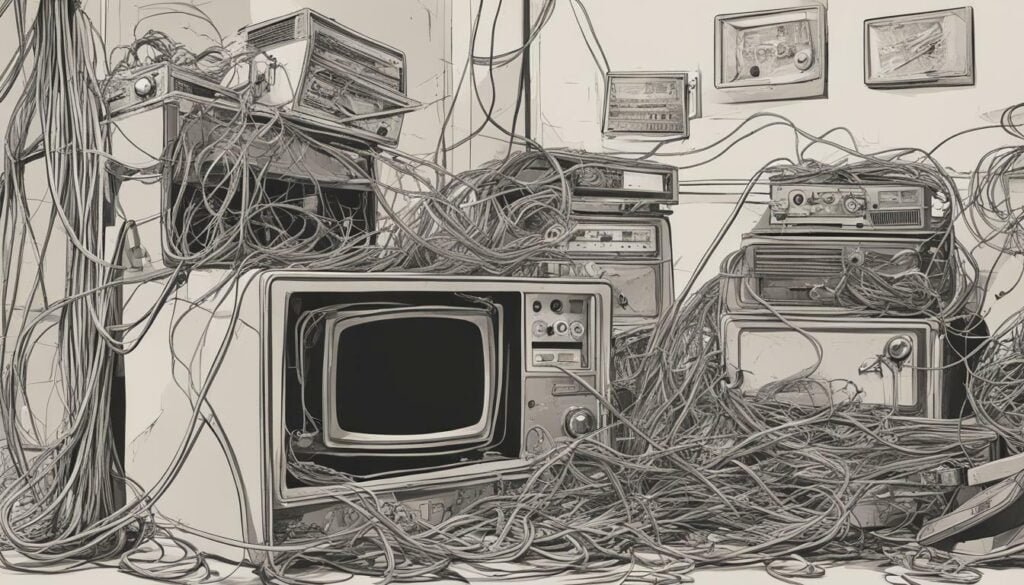
Furthermore, the cost of cable TV has been a major factor in the decline of traditional cable TV. According to a report by Leichtman Research Group, the average monthly cable bill in the United States is $107.30. This high cost has led many consumers to seek out more affordable entertainment options, such as streaming services that offer a wide range of content at a fraction of the cost.
As the television industry continues to evolve, cable TV providers face significant challenges in retaining subscribers and adapting to the changing preferences of consumers. While some providers have attempted to compete with streaming services by offering their own on-demand content, the industry as a whole is facing significant disruption from the rise of streaming services.
The Changing Landscape of the Entertainment Industry
In recent years, the entertainment industry has undergone a significant transformation due to the rise of streaming services and the shift towards digital media consumption. This disruption has forced traditional media companies to reconsider their business models and adapt to the changing landscape.
One of the main driving forces behind this change is the ability of streaming services to offer on-demand content to consumers. This has created a new level of convenience and flexibility for viewers, who can now watch their favorite shows on their own schedule.
Additionally, the rise of digital media consumption has opened up new opportunities for content creators. Streaming platforms such as Netflix, Amazon Prime, and Hulu have invested heavily in producing original programming, which has led to a new era of television with higher production values and more diverse storytelling.
Another key factor in the changing landscape of the entertainment industry is the way in which content is distributed. In the past, traditional cable TV providers held a monopoly on the distribution of television programming. Now, however, streaming services have disrupted this model by offering their own content directly to consumers.
This shift has had a significant impact on the industry as a whole. It has opened up new opportunities for smaller content creators who may not have had the opportunity to distribute their content through traditional channels. It has also created a more competitive landscape, which has forced traditional media companies to adapt or risk losing market share.
Overall, the changing landscape of the entertainment industry has created a new era of television and challenged traditional business models. As streaming services continue to grow in popularity, the industry will likely continue to evolve and adapt to these new trends.

The Rise of Original Content on Streaming Services
In recent years, streaming services have not only gained popularity for their convenience and affordability, but also for their original content. Streaming platforms such as Netflix, Hulu, Amazon Prime Video, and Disney+ have all invested heavily in producing their own shows and movies, and have seen great success with audiences.
One major impact of this trend has been on television viewership trends. Traditional TV networks have long dominated the market with their own original programming, but the rise of streaming services has disrupted this dynamic. As more and more viewers turn to streaming platforms for their entertainment, traditional television viewership has taken a hit.
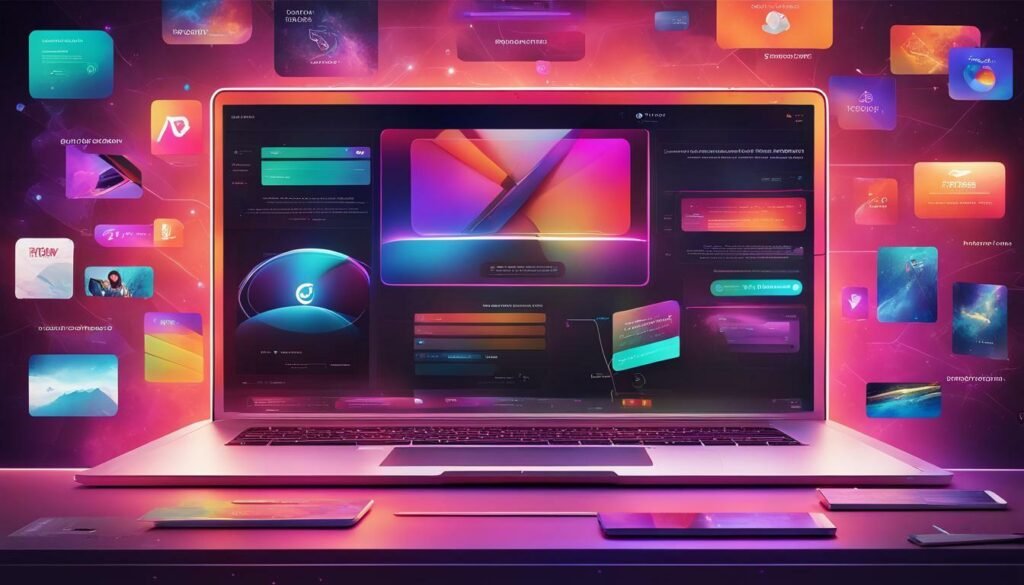
Original content on streaming services has also contributed to the success of these platforms. Shows like Stranger Things and The Crown on Netflix, The Handmaid’s Tale on Hulu, and The Mandalorian on Disney+ have all become cultural phenomenons, drawing in millions of viewers and generating buzz on social media.
Furthermore, streaming services have been praised for their willingness to take risks with their original programming. They have experimented with different genres and formats, and have given opportunities to up-and-coming creators and diverse voices that may not have had a chance with traditional TV networks.
The Future of Original Content on Streaming Services
As the competition between streaming services continues to grow, we can expect to see even more investment in original content. Platforms will be looking to stand out from the crowd and attract viewers with unique and compelling shows and movies.
However, with the rise of original content on streaming services, there may be concerns about oversaturation and a lack of diversity. Some critics have argued that the push for original content has led to a homogenization of the industry, with many shows and movies following similar formulas and relying on familiar tropes.
Despite these concerns, the popularity of original content on streaming services shows no signs of slowing down. As long as audiences continue to enjoy these shows and movies, streaming platforms will continue to invest in them.
The Challenges Faced by Cable TV Providers
As streaming services continue to grow in popularity, cable TV providers are facing significant challenges in retaining their customer base and adapting their business models to keep up with the changing industry landscape.
The traditional cable TV model is built on a subscription-based system, where customers pay a monthly fee for access to a package of channels. However, with the rise of streaming services and on-demand viewing, consumers are increasingly opting to cut the cord and rely solely on streaming platforms for their entertainment needs.
As a result, cable TV providers are facing declining subscription numbers and increased competition from streaming services. This has forced them to adapt their business models by offering more flexible and affordable packages, as well as investing in their own streaming platforms and original content.
Another challenge faced by cable TV providers is the changing viewing habits of consumers. With the rise of digital media consumption, traditional cable TV is no longer the only option for watching television. Streaming services offer a wider range of content, including original programming, and allow for on-demand viewing that fits with the busy lifestyles of modern consumers.
Furthermore, the cost of cable TV subscriptions continues to rise, which can make it less appealing to budget-conscious consumers. Streaming services, on the other hand, offer more affordable alternatives that can be tailored to individual preferences and viewing habits.
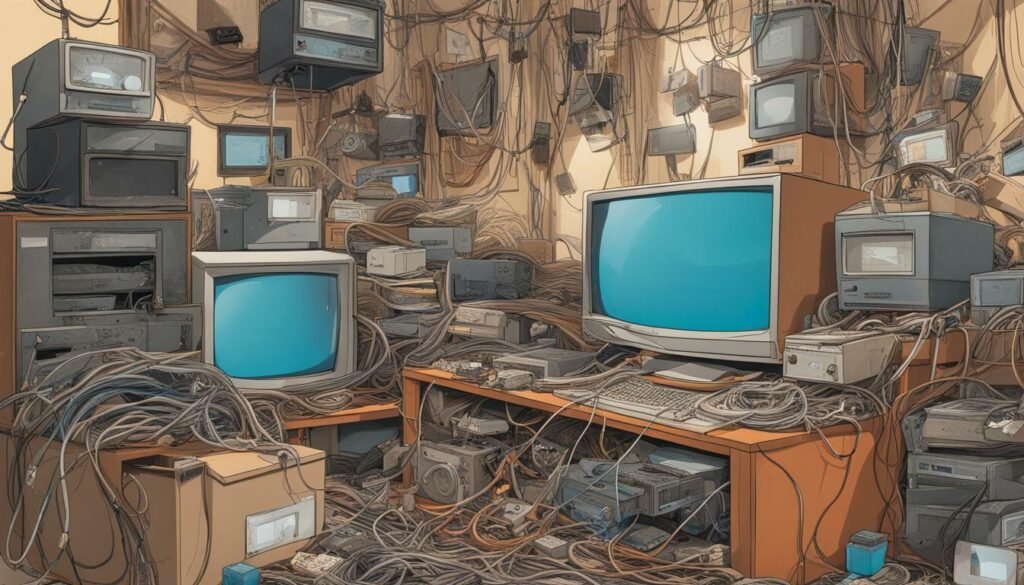
The television industry is changing rapidly, and cable TV providers must adapt to survive. By investing in their own streaming platforms, offering more flexible and affordable subscription packages, and creating original content, cable TV providers can remain competitive and retain their customer base in an increasingly digital world.
The Benefits and Drawbacks of Streaming Services
Streaming services have revolutionized the way we consume media, offering the convenience of on-demand viewing from any device at any time. This shift towards digital platforms has transformed the entertainment industry, creating new opportunities and challenges for content providers.
Benefits of Streaming Services
One of the main benefits of streaming services is the ability to watch your favorite shows and movies on your own schedule. Unlike traditional cable TV, streaming platforms offer on-demand viewing, allowing viewers to pause, rewind, and fast-forward through content as desired. This flexibility is highly valued by consumers who lead busy lives and prefer to watch content at their own pace.
Streaming services also offer a vast selection of content, including original programming, documentaries, and movies, that may not be available on traditional cable TV. This variety of options appeals to a diverse range of viewers and offers something for everyone.
Another key advantage of streaming services is the absence of long-term contracts or commitments. Viewers can easily subscribe and unsubscribe to services as they desire, without the need for installation or equipment fees. This flexibility allows for greater control of spending and the ability to access content on a month-to-month basis.
Drawbacks of Streaming Services
Despite their many benefits, streaming services also come with some drawbacks. Most notably, relying solely on streaming platforms for entertainment can limit the overall viewing experience. While these services offer a wide selection of content, they may not have access to live sports events or news broadcasts, which are often exclusive to traditional cable TV.
Streaming services also require a reliable internet connection and a compatible device, such as a smart TV or streaming device. For viewers without access to these technologies, or those with slow or inconsistent internet speeds, streaming services may not be a feasible option.
Another potential downside of streaming services is the cost. While some services offer low monthly subscription fees, viewers may need to sign up for multiple services to access all of their desired content. When combined, these costs may add up to more than a traditional cable TV subscription.
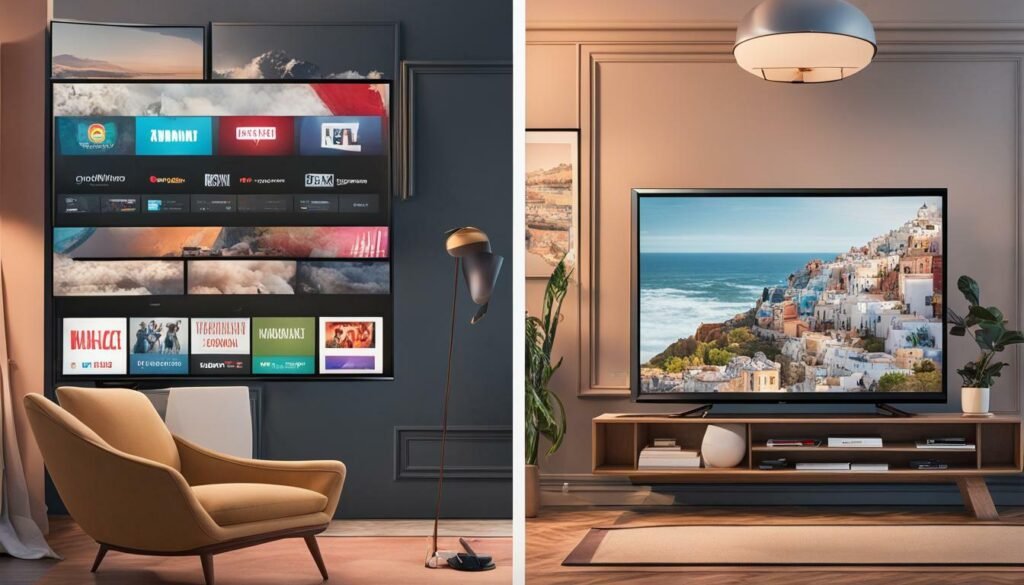
In conclusion, streaming services have transformed the entertainment industry by offering on-demand viewing and a wide selection of content. However, they are not without their limitations, including limited access to live events and potential cost. Despite these drawbacks, streaming services are here to stay and will continue to shape the future of media consumption.
The Future of Cable TV and Streaming Services
As the popularity of streaming services continues to rise, it is becoming increasingly clear that traditional cable TV providers must adapt their business models to remain competitive in the television industry. The growth of streaming services has had a significant impact on cable TV viewership, with many consumers opting to cut the cord and rely solely on streaming platforms for their entertainment needs.
However, it is important to note that cable TV is not going away entirely. While the growth of streaming services has certainly disrupted the industry, there is still a significant portion of the population that relies on cable TV for their television viewing.
That being said, the way we consume media is constantly evolving, and it is likely that we will see continued changes in the relationship between cable TV and streaming services. It is possible that we may see cable TV providers partnering with streaming services to offer bundled packages that include both traditional cable TV channels and streaming platforms.
The Rise of Hybrid Models
We may also see the emergence of hybrid models that combine the best of both worlds. For example, some cable TV providers are already offering apps that allow subscribers to access their content on streaming devices, such as Roku or Apple TV. By offering this type of flexibility, cable TV providers can appeal to consumers who want the convenience of streaming services, while still having access to their favorite cable TV channels.
On the other hand, streaming services may also start to incorporate elements of traditional cable TV into their platforms. For example, some streaming services are already experimenting with live streaming of sporting events and news broadcasts. By incorporating live TV programming into their platforms, streaming services can appeal to consumers who still value that type of content.
Competition and Collaboration
Ultimately, the future of cable TV and streaming services will be shaped by competition and collaboration. While there is certainly competition between the two forms of media consumption, there is also an opportunity for collaboration. By working together, cable TV providers and streaming services can create a more robust and diverse entertainment landscape that meets the needs of consumers.
Regardless of the direction the industry takes, it is clear that streaming services have had a significant impact on the television industry. As consumers continue to shift towards on-demand viewing, cable TV providers will need to adapt in order to remain relevant and competitive in the ever-changing landscape of the entertainment industry.
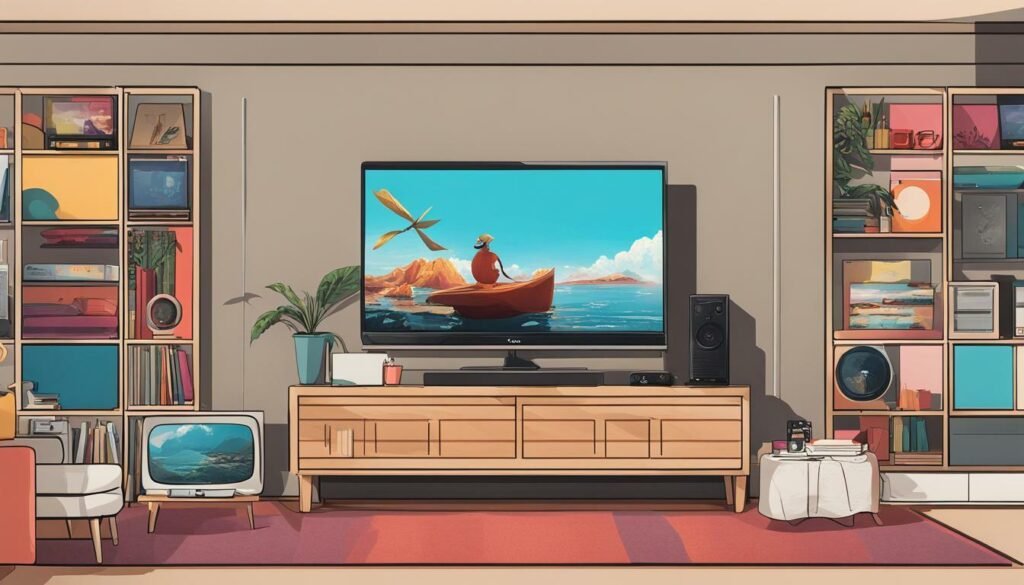
The Role of Advertising in Streaming Services
With the increasing popularity of streaming services, advertising models are changing to adapt to the digital landscape. As consumers continue to shift towards on-demand viewing, advertisers are looking for ways to reach them through streaming platforms.
Unlike traditional cable TV, where commercial breaks are a common occurrence, streaming services offer consumers the ability to watch content without interruptions. This poses a challenge for advertisers who must find ways to integrate their messages into the viewing experience without disrupting it.
One approach has been the use of product placement within shows and movies. By featuring products within the storyline, advertisers are able to promote their brands in a way that feels natural to the viewer. Another approach is the use of sponsored content, where brands work with streaming platforms to create original programming that aligns with their messaging.
However, the use of advertising within streaming services is not without controversy. Some viewers feel that it detracts from the authenticity of the viewing experience, while others are concerned about the use of consumer data to target ads.
As streaming services continue to grow and evolve, the role of advertising within them is likely to change as well. Advertisers will need to find ways to reach consumers in a way that feels organic and non-intrusive, while streaming platforms will need to balance the needs of advertisers with the expectations of their viewers.
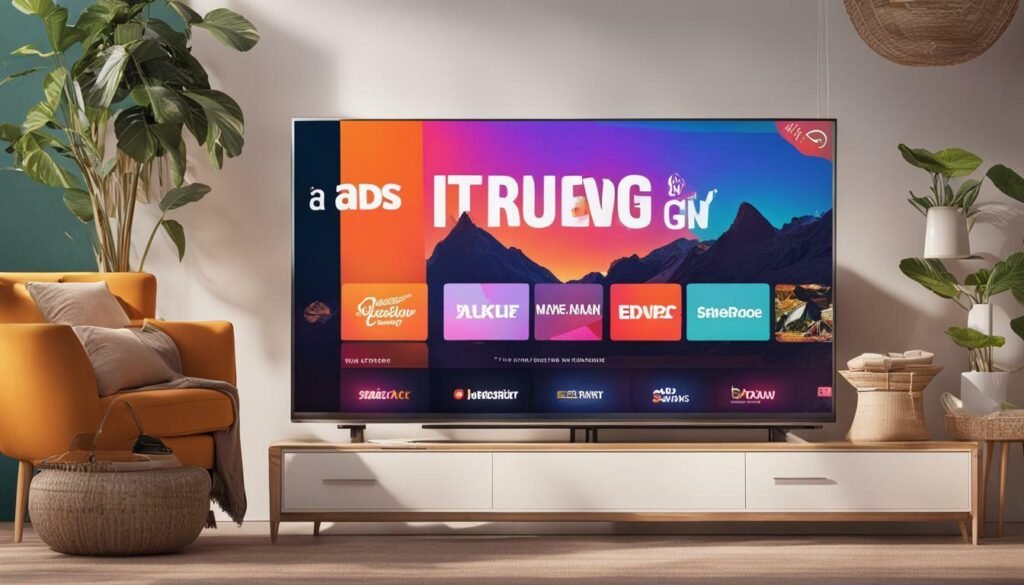
The Consumer Perspective: Cord-Cutting and Streaming Subscriptions
When it comes to cord-cutting and streaming services, consumers have a wide array of choices to make. There are many factors influencing their decisions – from budget constraints to personal preferences.
In recent years, cord-cutting has become increasingly popular, with more and more consumers ditching their traditional cable TV subscriptions in favor of streaming services. According to the latest statistics, around 44% of US households have cut the cord or never had a cable TV subscription at all. (cord-cutting, streaming services)
One of the main motivations behind cord-cutting is cost. Cable TV subscriptions can be expensive, with monthly bills ranging from $50 to $100 or more. In contrast, streaming services typically offer more affordable subscription options, with prices starting as low as $5.99 per month for a basic plan. This makes streaming services an attractive alternative for consumers looking to save money on their entertainment expenses. (cord-cutting, streaming services)
However, cost isn’t the only factor influencing consumer decisions about streaming services. Convenience is also a key consideration. With on-demand viewing, consumers can watch their favorite shows and movies whenever and wherever they want, without being tied to a specific broadcast schedule. This flexibility is particularly appealing to younger consumers who value the ability to customize their entertainment experiences. (streaming services)
Another factor driving the popularity of streaming services is the availability of original content. Many streaming platforms are investing heavily in producing their own shows and movies, which has led to the creation of some of the most critically acclaimed and popular television series of recent years. This has helped to position streaming services as a serious competitor to traditional cable TV providers. (streaming services)
Overall, the consumer perspective on cord-cutting and streaming subscriptions is one of choice and flexibility. While cost savings play a significant role in the decision-making process, consumers are also looking for convenience, variety, and quality content. As the streaming landscape continues to evolve, it’s likely that these factors will remain key drivers of consumer behavior. (cord-cutting, streaming services)
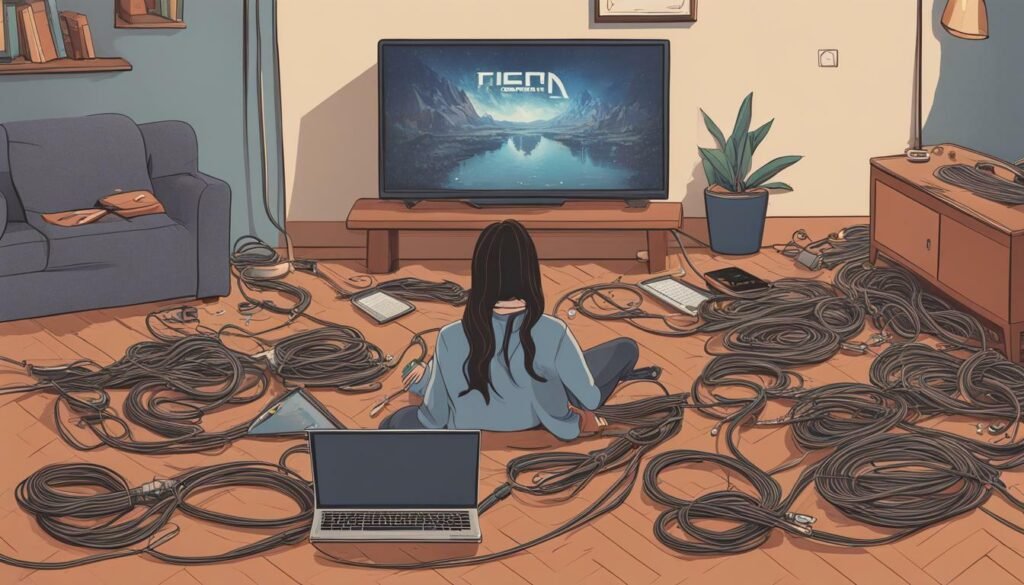
The Impact of Streaming Services on Traditional Cable TV
Throughout this article, we have explored the impact of streaming services on traditional cable TV. The rise of on-demand viewing and the increasing popularity of streaming platforms have disrupted the television industry and challenged cable TV providers.
We have seen how cord-cutting has led to a decline in traditional cable TV viewership and how the landscape of the entertainment industry is changing with the shift towards digital media consumption.
Original content produced by streaming platforms has had a significant impact on television viewership trends, and cable TV providers are facing increasing competition and the need to adapt their business models.
While streaming services offer the convenience of on-demand viewing, there are potential drawbacks to relying solely on these platforms for entertainment. The future of cable TV and streaming services remains uncertain, and it will be interesting to see how these forms of media consumption evolve in the coming years.
Conclusion
Overall, the impact of streaming services on traditional cable TV is significant and continuing to grow. As consumers increasingly turn towards digital media consumption and on-demand viewing, cable TV providers must adapt or risk being left behind. Streaming services offer a new era of entertainment, but there are also potential limitations to consider. The television industry is changing rapidly, and it will be exciting to see how it develops in the future.
FAQ
Q: What are streaming services?
A: Streaming services are platforms that allow users to watch video content over the internet, rather than through traditional cable or satellite television. They offer on-demand access to a wide range of movies, TV shows, and other content.
Q: What is cord-cutting?
A: Cord-cutting refers to the act of canceling or reducing traditional cable or satellite TV subscriptions in favor of streaming services. It has become increasingly popular as more consumers opt for on-demand viewing options and seek to save on monthly cable bills.
Q: What are some popular streaming platforms?
A: Some popular streaming platforms include Netflix, Hulu, Amazon Prime Video, Disney+, and HBO Max. These platforms offer a variety of content, including original shows and movies, as well as licensed content from other networks and studios.
Q: Why are streaming services growing in popularity?
A: Streaming services are growing in popularity due to several factors. They offer convenience and flexibility, allowing users to watch their favorite shows and movies on their own schedule. They also often provide a diverse range of content and original programming that appeals to a wide audience.
Q: How has the rise of streaming services affected traditional cable TV?
A: The rise of streaming services has had a significant impact on traditional cable TV. Many consumers are choosing to cut the cord and rely solely on streaming services for their entertainment needs. This has led to a decline in cable TV subscriptions and a shift in the television industry towards digital media consumption.
Q: What are the benefits of streaming services?
A: Streaming services offer several benefits to users. They provide access to a wide range of content, including movies, TV shows, and documentaries, at the click of a button. They also offer the convenience of on-demand viewing, allowing users to watch their favorite programs whenever and wherever they want.
Q: Are there any drawbacks to using streaming services?
A: While streaming services have many advantages, there are also some drawbacks to consider. Users may experience occasional buffering or streaming issues, especially if their internet connection is not stable. Additionally, some popular shows or movies may not be available on certain streaming platforms due to licensing agreements.
Q: What does the future hold for cable TV and streaming services?
A: The future of cable TV and streaming services is uncertain. While streaming services continue to grow in popularity, traditional cable TV providers are adapting to the changing landscape by offering their own streaming platforms. It is likely that both forms of media consumption will coexist in some form, with streaming services playing an increasingly prominent role.
Q: How do streaming services handle advertising?
A: Streaming services handle advertising differently from traditional cable TV. Some streaming platforms offer ad-supported options where users can watch content for free but have to view advertisements. Others offer ad-free subscriptions for a monthly fee. Streaming services are also experimenting with new advertising models, such as targeted ads based on user preferences.
Q: Why do people choose to cut the cord and subscribe to streaming services?
A: People choose to cut the cord and subscribe to streaming services for various reasons. Some do it to save money, as streaming services are often more affordable than traditional cable or satellite TV subscriptions. Others appreciate the convenience of on-demand viewing and the ability to customize their entertainment options.

